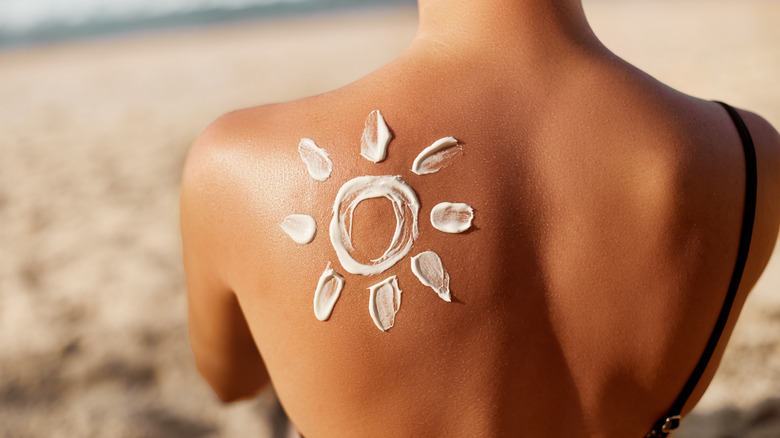Does ‘Reef-Safe’ Sunscreen Actually Help The Oceans?

As you head for the shores this summer, you’re likely to pack some sunscreen in your beach bag. Once upon a time, we may have just grabbed whatever sunscreen we had in the medicine cabinet and headed on our way, but in recent years, many have become more conscious of the ingredients in our sun-protection products, and sadly, some of them might actually be hurting the very same aquatic areas we are so excited to visit in warmer weather.
In the summer of 2018, Hawaii, which is home to many coral reefs, was the first state to ban sunscreens that contain oxybenzone and octinoxate, which research has proven to be harmful to marine life, especially to coral, which can be bleached and killed by the chemicals (via Consumer Reports). In the wake of this, many sunscreen companies began labelling their products “reef-safe” or “reef-friendly” when they are formulated without these two ingredients (via Byrdie). But can you trust the label? Are these sunscreens really protecting our oceans?
Are reef-safe sunscreens really protecting our oceans?

Unfortunately, there isn’t one standard definition of “reef-safe” or “reef-friendly” sunblock, so while virtually no sunscreen with these labels contains either of the most harmful ingredients to our oceans, oxybenzone and octinoxate, they can contain other ingredients that are toxic to reefs and other marine life, including Benzophenone-1, Benzophenone-8, OD-PABA, 4-Methylbenzylidene camphor, 3-Benzylidene camphor, nano-Titanium dioxide, nano-Zinc oxide, and Octocrylene (via Byrdie). In fact, according to the Environmental Working Group, the only sunscreens that are considered truly safe for oceanic life are zinc oxide and titanium dioxide.
Therefore, if you are committed to protecting the oceans while protecting your skin on your next beach adventure, it’s important to read the ingredients on the labels of the sunscreen you’re choosing. Even if it claims to be “reef-safe” or “reef-friendly,” if it contains any of the above concerning ingredients, you should probably choose something that relies only on titanium dioxide or zinc oxide (not nano-zinc oxide) for its skin-protecting power.
Source: Read Full Article



